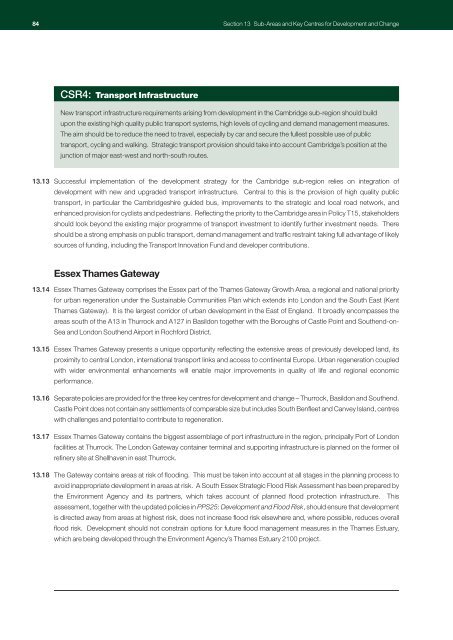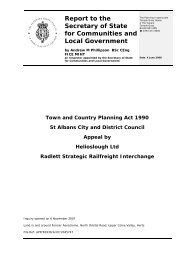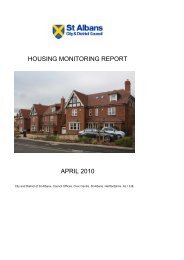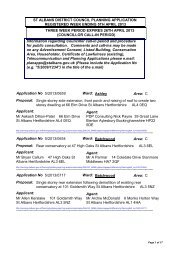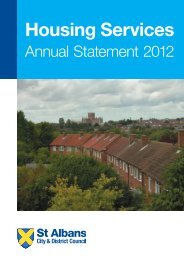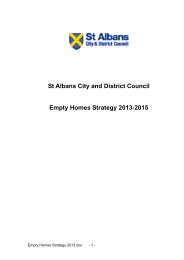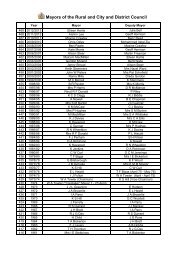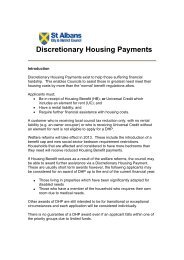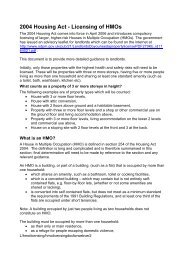RSS East Of England Plan - Broads Authority
RSS East Of England Plan - Broads Authority
RSS East Of England Plan - Broads Authority
You also want an ePaper? Increase the reach of your titles
YUMPU automatically turns print PDFs into web optimized ePapers that Google loves.
84<br />
Section 13 Sub-Areas and Key Centres for Development and Change<br />
CSR4: Transport Infrastructure<br />
New transport infrastructure requirements arising from development in the Cambridge sub-region should build<br />
upon the existing high quality public transport systems, high levels of cycling and demand management measures.<br />
The aim should be to reduce the need to travel, especially by car and secure the fullest possible use of public<br />
transport, cycling and walking. Strategic transport provision should take into account Cambridge’s position at the<br />
junction of major east-west and north-south routes.<br />
13.13 Successful implementation of the development strategy for the Cambridge sub-region relies on integration of<br />
development with new and upgraded transport infrastructure. Central to this is the provision of high quality public<br />
transport, in particular the Cambridgeshire guided bus, improvements to the strategic and local road network, and<br />
enhanced provision for cyclists and pedestrians. Reflecting the priority to the Cambridge area in Policy T15, stakeholders<br />
should look beyond the existing major programme of transport investment to identify further investment needs. There<br />
should be a strong emphasis on public transport, demand management and traffic restraint taking full advantage of likely<br />
sources of funding, including the Transport Innovation Fund and developer contributions.<br />
Essex Thames Gateway<br />
13.14 Essex Thames Gateway comprises the Essex part of the Thames Gateway Growth Area, a regional and national priority<br />
for urban regeneration under the Sustainable Communities <strong>Plan</strong> which extends into London and the South <strong>East</strong> (Kent<br />
Thames Gateway). It is the largest corridor of urban development in the <strong>East</strong> of <strong>England</strong>. It broadly encompasses the<br />
areas south of the A13 in Thurrock and A127 in Basildon together with the Boroughs of Castle Point and Southend-on-<br />
Sea and London Southend Airport in Rochford District.<br />
13.15 Essex Thames Gateway presents a unique opportunity reflecting the extensive areas of previously developed land, its<br />
proximity to central London, international transport links and access to continental Europe. Urban regeneration coupled<br />
with wider environmental enhancements will enable major improvements in quality of life and regional economic<br />
performance.<br />
13.16 Separate policies are provided for the three key centres for development and change – Thurrock, Basildon and Southend.<br />
Castle Point does not contain any settlements of comparable size but includes South Benfleet and Canvey Island, centres<br />
with challenges and potential to contribute to regeneration.<br />
13.17 Essex Thames Gateway contains the biggest assemblage of port infrastructure in the region, principally Port of London<br />
facilities at Thurrock. The London Gateway container terminal and supporting infrastructure is planned on the former oil<br />
refinery site at Shellhaven in east Thurrock.<br />
13.18 The Gateway contains areas at risk of flooding. This must be taken into account at all stages in the planning process to<br />
avoid inappropriate development in areas at risk. A South Essex Strategic Flood Risk Assessment has been prepared by<br />
the Environment Agency and its partners, which takes account of planned flood protection infrastructure. This<br />
assessment, together with the updated policies in PPS25: Development and Flood Risk, should ensure that development<br />
is directed away from areas at highest risk, does not increase flood risk elsewhere and, where possible, reduces overall<br />
flood risk. Development should not constrain options for future flood management measures in the Thames Estuary,<br />
which are being developed through the Environment Agency’s Thames Estuary 2100 project.


